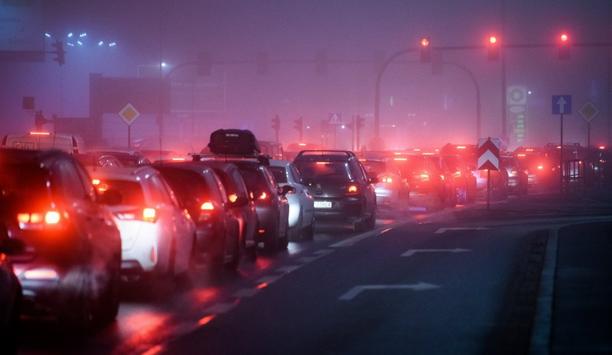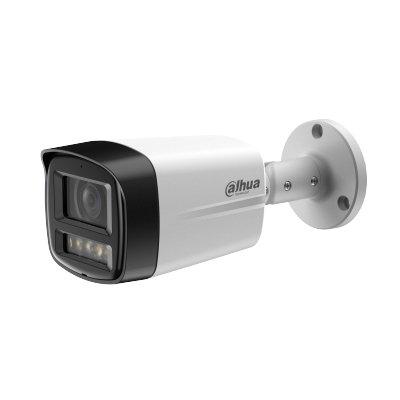A frequent target for terrorism, airports faces considerable challenges in securing the flow of traffic. Concerns over security can ground flights, grinding operations to a halt. Whether one needs to inspect all vehicles entering the airport grounds or just those entering higher-security areas like the apron and the container space, there is no room for long waits during inspections.
Passengers are counting on their flights leaving on time, and security delays could lead to flight delays. However, one can’t afford to compromise the security standards either.
Propane gas cylinders
While security is usually heavy in the terminal buildings themselves, in some international and local airports, there are not enough measures in place in the external road and parking areas leading to the departure and arrival zones.
The attack resulted in ‘only’ five people injured and heavy damage to the terminal building
For example, on June 30, 2007, a Jeep Cherokee laden with propane gas cylinders and gasoline cans was driven at a high speed into the doors of the Glasgow Airport departure area on one of the busiest days of the year. The attack resulted in ‘only’ five people injured and heavy damage to the terminal building. Incidents like this one really emphasised the need for an automatic and efficient method for inspecting vehicles entering the different areas in and around the airport.
Heavy traffic control
The airport apron, flight line or ramp is the area of an airport where aircraft are parked, unloaded or loaded, refilled, or boarded. In most airports, the security regulations in this area are heavy, and only authorised, trained personnel are allowed to drive in and out while withholding heavy traffic control rules.
One can only imagine the danger of terrorists or other hostile people entering in an authorised vehicle. There needs to be a method to make sure these types of people cannot use fake licence plates if the recurring vehicle list does get into the wrong hands. While clearly the number of civilian passengers who use airports has risen dramatically as time has gone by, the risks associated with airports and airline travel have also increased.
Identifying vehicle passengers
The device is available in both a mobile and a stationary, fixed version and works in extreme conditions
The threat of bombs or cargo-related explosives is significant, but security measures have not necessarily risen at the same rate as threats and number of flights and passengers. The financial and physical risks of illicit and dangerous materials entering sensitive areas in and around an airport are clear, and a new generation of screening is required to tackle these challenges. UVeye scans, analyses, and records all passing vehicles, ensuring security while also keeping flights on schedule.
Helios by UVeye is the perfect option to protect both the access roads and parking facilities around the airport and important areas like the apron. Helios improves security while keeping security personnel safe. The device is available in both a mobile and a stationary, fixed version and works in extreme conditions. Their technology can even identify vehicle passengers with high body temperatures to help prevent the spread of COVID-19.
High-resolution cameras
Helios UVIS uses machine learning and artificial intelligence to inspect the undercarriage of any vehicle that drives over its multiple high-resolution cameras. It alerts security personnel about any irregularities or foreign objects hidden in the undercarriage, whether its weapons intended to be used in a terrorist attack, improvised explosive devices, or illegal cargo to be loaded onto a plane in the apron of the airport.
Inspecting the undercarriages of vehicles is very difficult for security personnel and is sometimes neglected due to the number of vehicles entering an airport. Before Helios, there was never an effective solution for under-vehicle inspection, and even if security officers inspected the undercarriage, they probably didn’t know what to look for.
Reducing inspection times
UVeye is here to solve this problem by providing drive-through solutions in selected access points
UVeye has built its products as drive-through solutions that reduce inspection times to as little as a few seconds, supporting a quick flow of vehicles entering or leaving the premises. With Helios, the security guard can inspect the vehicle from a safe distance by simply looking at the high-resolution images on a tablet or computer screen, checking for anything suspicious or unusual in the undercarriage, automatically marked by the system.
Many airports do not have enough staff or the capacity to inspect every vehicle entering or leaving secure areas. UVeye is here to solve this problem by providing drive-through solutions in selected access points, alerting security personnel of any irregularities or potential threats attached to a vehicle. Helios is the only product on the market able to detect issues in the undercarriage of a vehicle passing through the system for the first time.
Fingerprint ID feature
The apron of the airport is the most sensitive area of the facility, and with UVeye’s technology and unique fingerprint ID feature, every vehicle entering or exiting the apron will be marked using artificial intelligence and receive a unique ID that will be saved in the database. This way, security personnel will not need to rely on licence plates alone when inspecting vehicles on the authorised vehicle list.
If someone attempts to enter using a fraudulent licence plate, the system will recognise that it is not the same vehicle, and the attempted trespassers will be stopped in their tracks. Helios can withstand up to 20 tons per axle, meaning that it will survive being run over by even massive vehicles like trucks and buses. It is fully operational at temperatures between -20 and 40 degrees Celsius and is IP 68/54 compliant, meaning it offers full protection against sand, dust, or rain.
Airport access roads
UVeye’s thermal sensor can also detect the body temperatures of vehicle passengers entering the external airport access roads, which can help identify visitors with potential fevers, improving the safety of everyone in and around the airport.
Airports around the world can enhance their security efforts with automatic vehicle inspection systems
Integrating to the centralised server provides the capability of connecting multiple systems or lanes across different sites while enabling central management and control via one screen. The centralised management system enables the client to access the different systems deployed and manage the different users and historical data. Airports around the world can enhance their security efforts with automatic vehicle inspection systems, providing an extended layer of safety in and around the airport.
Access control systems
Uveye took into consideration heavy traffic entering the access and parking areas of an airport when it built its drive-through scanner, Helios, which can quickly find any threat attached to or hidden in the undercarriage without slowing down vehicle traffic.
Helios is the perfect solution to prevent any weapons, bombs, drugs, or other illegal or dangerous items from entering the apron of the airport and potentially accessing the airplanes about to take flight. Integrating Helios with other security and access control systems can provide a multi-layer approach that will tighten the entry and exit points to any sensitive site while keeping personnel and data safe. UVeye is ideal for airports and also can be implemented at border crossings, seaports, military bases, embassies, data centres, and other secure perimeters.



















